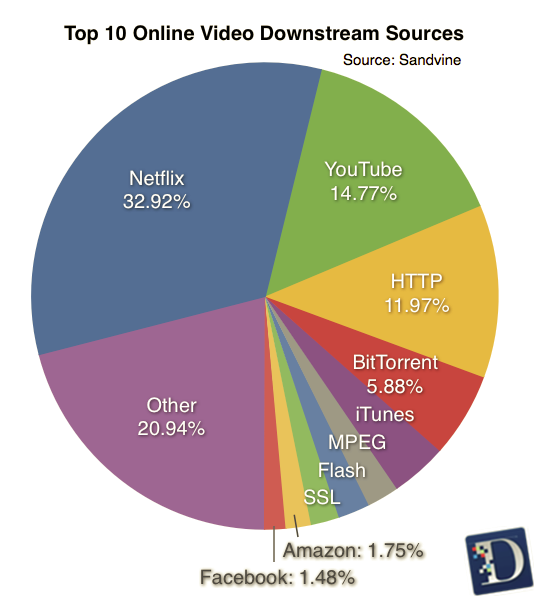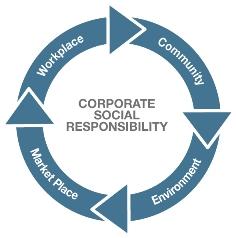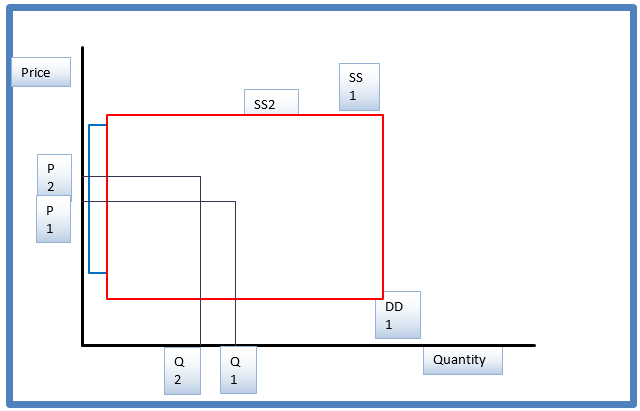Introduction
New product development (NPD) is an important tool for business survival (Hart, Tzokas & Saren 1999; Inwood & Hammond 1993). It enables companies to meet future consumer demand for goods and services (Tidd 2009; Trott 2008; Earle, Earle & Anderson 2005). Organizational issues, such as project planning and timing affect NPD. Companies have consistently innovated to keep up with current and future demands of products and services. This paper is a critical evaluation of NPD processes. Key issues explored in the analysis include the importance of NPD, competitor identification, trends affecting NPD, and NPD models.
Importance of NPD
Theoretical Underpinning
The importance of NPD is represented by multiple theories. For example, the stage-gate model postulates that innovation happens in different phases (Stjepandić 2014; Theodosios 2015; Anderson 2014; Tugrul 2017). The linear model of NPD is another framework of implementation that has dominated the traditional practice of innovation management. It relies on scientific research as the basis for undertaking innovative activities (Narayanamurti & Odumosu 2016; Gaubinger et al. 2014). These theories strive to increase the rate of success in NPD implementation.
Example of NPD Success
Earle and Earle (2008) say that innovation has helped companies to remain relevant in a competitive business environment. For example, Netflix has changed the blockbuster film industry through digital innovation. Consequently, it has risen to the top of the film distribution business and disrupted DVD distribution and content development processes (HBS 2018). According to figure 1 below, Netflix is the leading online video streaming source today.

Example of NPD Failure
Some companies have failed to recognize the importance of innovation and suffered poor market performance. For example, despite Nokia being one of the most successful phone companies in the early 2000s, it failed to innovate and was overtaken by market leaders Apple and Samsung.
Competitor Identification
Baines and Fill (2014) say there are many techniques for identifying competitors. One of them is the supply-based approach, which locates a company’s competitors based on the similarities and differences in attributes it shares with another organization (Parsons & Chiu 2014). The second technique is the demand-based approach. It helps managers to identify competitors by evaluating consumer characteristics (Hahn 2015; Szmigin 2003). Lastly, the product-industry hierarchy is another tool for identifying competitors. The model helps organizations to recognize rivals by categorizing them into different groups (Golder & Mitra 2018).
Effects
The three strategies of competitor identification mentioned above may affect new product development by influencing marketing strategies (Parsons & Chiu 2014). For example, Tesla, which is an automobile company, adopted a high-end market strategy by developing luxurious sports cars as opposed to its main rival, Toyota, which targeted the low-end consumer segment, by producing an economic car – Toyota Prius. This example shows that the NPD processes of both companies helped them to define their marketing strategy.
Current Trend
The methodologies for assessing the success and failure of NPD are hinged on traditional indices of corporate performance, such as sales numbers and motivation to launch a product. Several trends affect how companies report these indices. One of them is social responsibility, which refers to the perceived interests of businesses in supporting social goals (Vugec, Tomičić-Pupek & Vukšić 2018). Figure 2 below highlights the key tenets of social responsibility.

Factors affecting social advancement are varied and include (but are not limited to) environmental concerns, gender fairness, and poverty eradication (Kampf 2018; Cheruiyot & Tarus 2015; Wang &Yang 2015).
Effects of Current Trend on Innovation
Social responsibility is one of the most common causes of product failure (Power et al. 2016; Vugec, Tomičić-Pupek & Vukšić 2018; Wigmore-Álvarez & Ruiz-Lozano 2014). In line with the above view, Wang and Yang (2015) say that the lack of social awareness in innovation is linked to poor reception of products and services because many customers today choose to associate themselves with brands that are sensitive to varied social issues. Therefore, socially responsible organizations often have a high chance of success in NPD compared to those that ignore the impact of innovation on society (Kampf 2018; Cheruiyot & Tarus 2015).
The effect of social responsibility on innovation has been reported in the oil sector through Shell’s multinational operations. Catalyzed by concerns from environmental organizations, such as the Greenpeace Movement, the corporation’s drilling technologies were criticized for their adverse environmental effects (Moodie 2016). As a result, the company suffered a negative brand image, which led to financial losses through an 87% decline in its revenues (Moodie 2016).
Comparatively, Nestle Food Company, which operates in the fast-moving consumer goods segment, has benefitted from its innovation processes through an improved brand image, which stems from the positive environmental record associated with its NPD. In some reports, the company has been termed a “game-changer” because of its support for forestation (Moodie 2016).
McDonald’s is another company, which has similarly gained a positive market reception for being cognizant of social issues. Particularly, the company has been lauded for improving the welfare of its workers through pay increments and reducing the use of poultry products, which have high antibiotic content (Moodie 2016). The company also received accolades for phasing out the use of eggs obtained from caged hens (Moodie 2016).
Support for the company has mostly come from animal welfare organizations, such as Mercy for Animals (Moodie 2016). Based on the insights highlighted above, social responsibility is a powerful trend that shapes NPD success. Therefore, its growing importance in the contemporary business environment has an impact on innovation because it improves how customers receive new products or services.
Models
What Has Been the Traditional Practice in NPD?
Firms that want to remain competitive in today’s business environment cannot ignore innovation and product development (Earle & Earle 2000; Earle 1999; Fuller 2005). Product development is an old concept that has been traditionally implemented at the departmental level. The departmental-stage model emerged from this tradition as a product development framework that gives different departments the responsibility to complete specific stages of product development (Godin 2017). However, this model has been criticized for having communication gaps and being slow (Huang, Tu & Kuo 2017; Neumann 2015).
In this regard, it underrates the contribution of other players in the innovation process. There are two versions of the linear framework: the technology-push model and market-push structure. The technology-push model typically follows five key steps that include basic science, design/engineering, manufacturing, marketing, and sales (Narayanamurti & Odumosu 2016). Comparatively, the market push framework is simpler because it only has four phases of development that include market needs identification, development, manufacturing, and sales (Li & Zhang 2015).
This model also recognizes the market as the source of all product development ideas. Although the linear model of innovation is one of the most studied frameworks of product development, it has been criticized for failing to account for the impact of different stages of feedback that characterize NPD (Ko et al. 2015; Dolan 1993).
Addressing Shortcomings
The activity-based model was introduced to address the shortcomings of the departmental-stage and linear models (Tajvidi & Karami 2016). It accommodates feedback loops that are instrumental in improving the quality of the product development process. The activity-based model is also unique because it draws attention to project-oriented processes as opposed to functional activities of innovation (Schaefer 2014; Suharyanti, Subagyo & Bastian 2017). In this regard, any problem associated with the product development process is detected early.
New Product Development and the Diffusion of Innovation
NPD is defined by competing activities, including the generation of new knowledge, screening of new product ideas, concept development and testing, development of product design, test marketing, product commercialization, and product launch. Based on the insights gathered from the models discussed above, my proposed product development model addresses key activities by reviewing them in three phases that include invention, innovation, and diffusion as highlighted in figure 3 below.

The invention stage largely focuses on the generation and screening of new product ideas. The second stage of innovation is the most important one because critical aspects of product development, such as concept and design development are completed here. The last stage in the model is diffusion, which includes key marketing activities for creating awareness about new products, such as test marketing and product commercialization.
Conclusion
This paper has demonstrated that the product development process is dynamic because of the multiplicity of its different parts. The product development models discussed in the analysis are particularly essential in understanding how a culture of innovation could be fostered. However, the goal of product or service development often dictates the appropriateness of each model. Lastly, the need for organizations to become socially responsible is a strong trend that affects product development today because companies are under increased pressure to produce goods and services that do not cause social harm. This trend is likely to influence product development processes in the next decade.
Reference List
Anderson, DM. 2014. Design for manufacturability: how to use concurrent engineering to rapidly develop low-cost, high-quality products for lean production, CRC Press, London.
Baines, P & Fill, C. 2014. Marketing 3EP, Oxford University Press, Oxford.
Cheruiyot, TK & Tarus, DK. 2015. ‘Modeling employee social responsibility as an antecedent to competitiveness outcomes’, SAGE Open, vol. 5, no. 1, pp. 1-13.
Dolan, RJ. 1993. Managing the new product development process, Addison-Wesley Publishing Company, Boston, MA.
Earle, M. 1999. Creating new foods – the product developer’s guide, Chandos Publishing, Oxford.
Earle, M & Earle, R. 2000. Building the future on new products, Leatherhead Publishing, Surrey.
Earle, M & Earle, R. 2008.. Case studies in food product development, Woodhead Publishing, Abington, PE.
Earle, M, Earle, R & Anderson, A. 2005. Food product development, Woodhead, Cambridge, MA.
Fuller, GW 2005. New food product development, 2nd edn, CRC Press, London.
Gaubinger, K, Rabl, M, Swan, S & Werani, T 2014. Innovation and product management: a holistic and practical approach to uncertainty reduction, Springer, London.
Godin, B 2017. Models of innovation: the history of an idea, MIT Press, Cambridge, MA.
Golder, PN & Mitra, D 2018. Handbook of research on new product development, Edward Elgar Publishing, London.
Hahn, T 2015, Cross-industry innovation processes: strategic implications for telecommunication companies, Springer, London.
Hart, S, Tzokas, N & Saren, M 1999, ‘The effectiveness of market information in enhancing new product success rates’, European Journal of Innovation Management, vol. 2, no. 1, pp 20-35.
HBS 2018, The origin of Netflix’s success. Web.
Huang, YC, Tu, JC & Kuo, KP. 2017. ‘Establishing sustainable design and development for plastic mold under product service system’, Advances in Mechanical Engineering, vol. 9, no. 7, pp. 1-10.
Inwood, D & Hammond, J. 1993. Product development: an integrated approach. Kogan Page, London.
Kampf, CE 2018. ‘Connecting corporate and consumer social responsibility through social media activism’. Social Media + Society, vol. 4, no. 1, pp. 1-10.
Ko, YT, Chen, MS, Yang, CC & Zheng, MC 2015, ‘Modelling a contradiction-oriented design approach for innovative product design’, Journal of Engineering Manufacture, vol. 229, no. 1, pp. 199-211.
Li, Y & Zhang, S 2015, ‘Static scheduling in consideration of resource categories in collaborative product development project’, Advances in Mechanical Engineering, vol. 7, no. 10, pp. 1-11.
Mintz, S. 2018. What are corporate social responsibilities. Web.
Moodie, A. 2016. ‘The world’s most hated company: can NGOs help turn Shell’s reputation around?’. The Guardian. Web.
Narayanamurti, V & Odumosu, T. 2016. Cycles of invention and discovery, Harvard University Press, Cambridge, MA.
Neumann, F. 2015. Analyzing and modelling interdisciplinary product development: a framework for the analysis of knowledge characteristics and design support, Springer, London.
Parsons, J & Chiu, D (eds.). 2014. Advances in conceptual modelling, Springer, New York, NY.
Power, S, Allouch, A, Brown, P & Tholen, G. 2016. ‘Giving something back? Sentiments of privilege and social responsibility among elite graduates from Britain and France’, International Sociology, vol. 31, no. 3, pp. 305-323.
Schaefer, D (ed.) 2014, Product development in the socio-sphere: game-changing paradigms for 21st-century breakthrough product development and innovation, Springer, London.
Stjepandić, J 2014. Moving integrated product development to service clouds in the global economy, IOS Press, London.
Suharyanti, Y, Subagyo, NA & Bastian, I 2017. ‘A multiple triangulation analysis on the role of product development activities on product success’, International Journal of Engineering Business Management, vol. 9, no. 1, pp. 1-10.
Szmigin, I 2003. Understanding the consumer, Sage, London.
Tajvidi, M & Karami, A 2016, Product development strategy: innovation capacity and entrepreneurial firm performance in high-tech SMEs, Springer, London.
Theodosios, T (ed.) 2015, Trends and innovations in marketing information systems, IGI Global, London.
Tidd, J 2009, Managing innovation, 4th edn, Wiley, Chichester.
Trott, P 2008, Innovation management & new product development, 4th edn, Pearson Education, Harlow.
Tugrul, DU 2017, Managing technological innovation: tools and methods, World Scientific, London.
Vugec, DS, Tomičić-Pupek, K & Vukšić, VB 2018, ‘Social business process management in practice: overcoming the limitations of the traditional business process management’, International Journal of Engineering Business Management, vol. 10, no. 1, pp. 1-10.
Wang, Y & Yang, L 2015, ‘Business social responsibility to improve new product development’, Journal of Economics, Business and Management, vol. 3, no. 5, pp. 510-513.
Wigmore-Álvarez, A & Ruiz-Lozano, M 2014, ‘The United Nations global compact progress reports as management control instruments for social responsibility at Spanish universities’, SAGE Open, vol. 4, no. 2, pp. 1-10.
